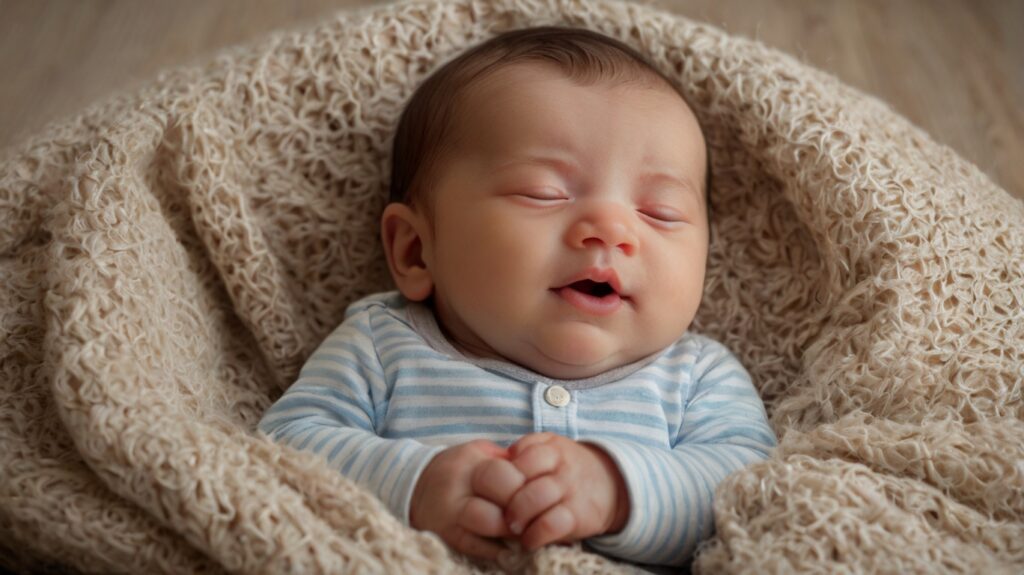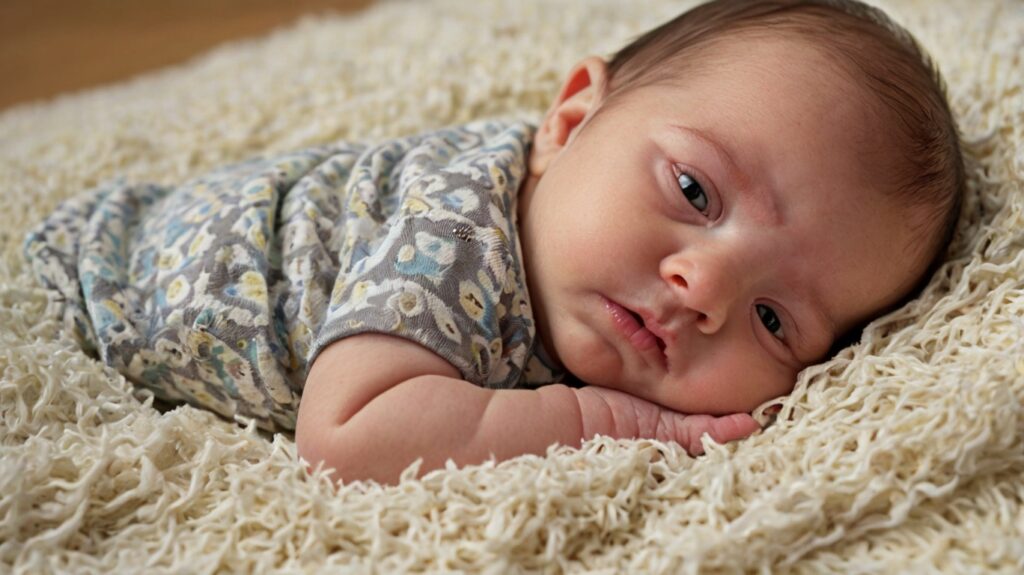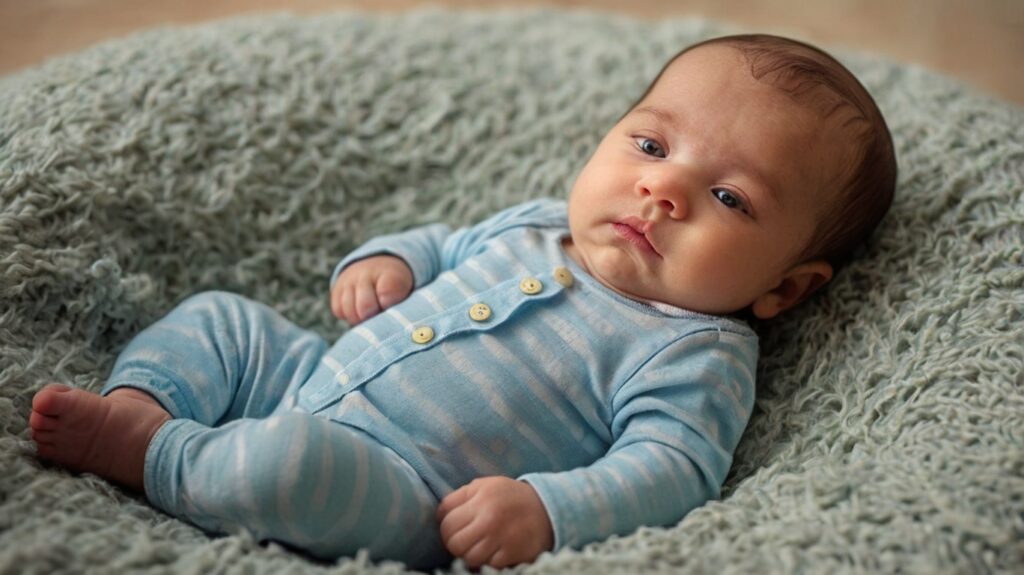
At four weeks old—about one month—your baby is continuing to settle into life outside the womb. Though still tiny and dependent, they are growing quickly and starting to show more alertness and responsiveness.
Your baby likely sleeps most of the day, typically 14 to 17 hours in total, spread across multiple naps. Feeding remains frequent, every 2 to 4 hours, as their stomach gradually grows and they begin to consume larger amounts of milk or formula. You may notice that feedings become a bit more efficient as your baby’s sucking strengthens.
By this age, your newborn may start showing early signs of their personality, like brief smiles, calming at a parent’s voice, or showing curiosity by looking at faces or contrasting objects. Motor skills are still limited to reflexes, but some babies begin gently lifting their heads during tummy time, strengthening neck muscles.

Month-by-Month Baby Growth Overview (First Year)
Babies grow rapidly during their first year, with physical, cognitive, emotional, and motor milestones emerging month by month.
Month 1 (Weeks 0–4)
- Weight: Most babies regain birth weight by 2 weeks and then start gaining about 5–7 ounces per week.
- Reflexes dominate movements (grasping, rooting).
- Vision: Can focus about 8–12 inches.
- Social: Begins to briefly track faces and respond to voices.
Month 2
- Improved head control when held upright.
- Smiles begin, especially in response to caregivers.
- Coos and makes soft vowel sounds.
- Begins to follow moving objects with eyes.
Month 3
- Holds head steady without support.
- Opens and closes hands; may swipe at objects.
- Laughs and vocalizes more.
- Begins to recognize familiar faces.
Month 4
- Rolls over front to back.
- Reaches and grasps toys purposefully.
- Increased social interaction and recognition.
- Starts to babble consonant sounds (like “ba,” “da”).
Month 5
- Rolls both ways (front to back and back to front).
- Sits with support.
- Shows greater interest in surroundings.
- Responds to own name.
Month 6
- Sits without support for short periods.
- Begins solid foods.
- Explores objects by mouth and hands.
- Babbles and experiments with sounds.
Month 7
- May start crawling or scooting.
- Transfers objects between hands.
- Recognizes familiar people and strangers.
- Expresses emotions with sounds and facial expressions.
Month 8
- Sits steadily.
- Begins to pull up to stand.
- Develops object permanence (looks for hidden objects).
- Imitates sounds and gestures.
Month 9
- Crawls efficiently.
- Uses pincer grasp to pick up small items.
- Responds to simple commands.
- Shows attachment behaviors.
Month 10
- Cruises along furniture.
- Babbles repetitive sounds (“mama,” “dada” without meaning).
- Understands “no” and simple words.
- Explores environment more confidently.
Month 11
- Stands alone briefly.
- Waves goodbye and claps hands.
- Uses gestures to communicate.
- Begins to experiment with language.
Month 12
- May take first steps.
- Says one or two simple words.
- Shows preferences for certain people and toys.
- Engages in simple play like peek-a-boo.

Final Thoughts
At four weeks, your baby is still in the newborn phase but rapidly progressing toward more alertness and interaction. Watching their growth month by month reveals amazing changes as they build the foundations for crawling, talking, and exploring the world around them.
Every baby develops at their own pace, but understanding typical milestones helps you appreciate each exciting stage of your little one’s first year.